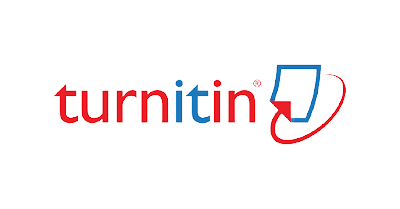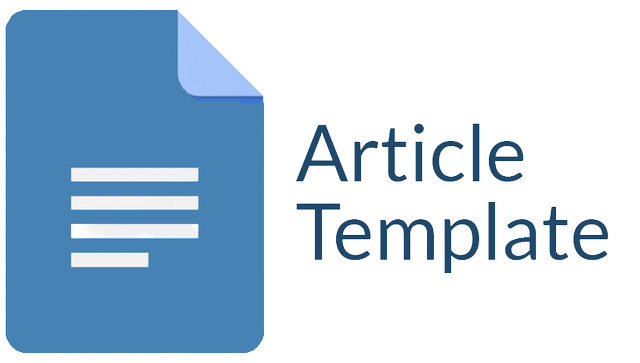STUDI PENERAPAN KONSEP EKO HIDRAULIK UNTUK MITIGASI BANJIR DI SUNGAI PULISAN
Abstract
The analysis began by finding the frequency of rain using the Log Pearson III method. The rain data used came from two rain posts, namely the Araren-Pinenek MRG rain post and the Maen Climatology rain post. The rainfall data used is the maximum daily rainfall data from 2002 to 2019. Rain flow modeling on the HEC-HMS komputer program using the HSS Soil Conservation Services method, and for water loss with the SCS Curve Number (CN). For baseflow using the recession method. HSS SCS parameter calibration was performed before simulating flood discharge using peak discharge test. The calibrated parameters are lag time, curve number, recession constant, initial discharge and ratio to peak. For the limits of each parameter is adjusted to the standard values in the HEC-HMS komputer program. The peak discharge test results show 2.2 m3 / second. Then a flood discharge analysis was carried out with calibrated parameters using the HEC-HMS komputer program. The peak discharge results simulated each time are re-entered in the HEC-RAS komputer program, then simulating flow profiles including flow velocity and high elevation of the water table. The flood discharge plan used is the 25 years period of 24,5 m3/second by installing several Eco Hydraulic constructions such as vetiver grass, bush grass, bamboo plants, logs, and a combination of vetiver grass and logs. The flow speed of the existing cross-section with the application between vetiver grass and logs can be reduced by 62%. With the use of Eco Hydraulics, it can reduce and optimize flow speed and looks aesthetic considering Pulisan is a superpriority area
Downloads
References
Fajar, M. M., Sumarauw, J. S. F., & Mananoma, T. (2022). Analisis Potensi Dan Pengendalian Banjir Di Sungai Pulisan Dengan Konsep Eko Hidraulik. TEKNO.
Gasser, E., Schwarz, M., Simon, A., Perona, P., Phillips, C., Hübl, J., & Dorren, L. (2019). A review of modeling the effects of vegetation on large wood recruitment processes in mountain catchments. In Earth-Science Reviews (Vol. 194). https://doi.org/10.1016/j.earscirev.2019.04.013
Giri, S., Thompson, A., Donchyts, G., Oberhagemann, K., Mosselman, E., & Alam, J. (2021). Stabilization of the lower jamuna river in bangladesh—hydraulic and morphological assessment. Geosciences (Switzerland), 11(9). https://doi.org/10.3390/geosciences11090389
Goldberg, R., Rose, J. M., Mercaldo-Allen, R., Meseck, S. L., Clark, P., Kuropat, C., & Pereira, J. J. (2014). Effects of hydraulic dredging on the benthic ecology and sediment chemistry on a cultivated bed of the Northern quahog, Mercenaria mercenaria. Aquaculture, 428–429. https://doi.org/10.1016/j.aquaculture.2014.03.012
Islam, M. S., Shahriar, B. A. M., & Shahin, H. M. (2013). Study on growth of vetiver grass in tropical region for slope protection. International Journal of GEOMATE, 5(2), 729–734. https://doi.org/10.21660/2013.10.3163
Islam, M., Van Camp, M., Hossain, D., Sarker, M. M. R., Khatun, S., & Walraevens, K. (2021). Impacts of large-scale groundwater exploitation based on long-term evolution of hydraulic heads in Dhaka city, Bangladesh. Water (Switzerland), 13(10). https://doi.org/10.3390/w13101357
Kairupan, Reynaldo C., Tiny Mananoma, J. S. F. S. (2017). Pola Distribusi Hujan Jam – Jaman Wilayah Bolaang Mongondow. Jurnal Sipil Tekno, 15(68).
Kim, K., Riley, S., Fischer, E., & Khan, S. (2022). Greening Roadway Infrastructure with Vetiver Grass to Support Transportation Resilience. CivilEng, 3(1), 147–164. https://doi.org/10.3390/civileng3010010
Makal, A. P., Mananoma, T., & Sumarauw, J. S. F. (2020). Analisis Debit Banjir dan Tinggi Muka Air Sungai Kawangkoan di Desa Kawangkoan Kecamatan Kalawat Kabupaten Minahasa Utara. Jurnal Sipil Statik, 8(3), 283–292. https://ejournal.unsrat.ac.id/index.php/jss/article/view/28736
Maryono, D.-I. I. A. (2009). Eko-Hidraulik: Pengelolaan Sungai Ramah Lingkungan.
Mason, M. (2020). Hydraulic patronage: A political ecology of the Turkey-Northern Cyprus water pipeline. Political Geography, 76. https://doi.org/10.1016/j.polgeo.2019.102086
Pertiwi, N. (2011). Penggunaan Konsep Ekohidrolik Sebagai Upaya Pengendalian Bencana Wilayah Pemukiman Pada Sungai Lawo Kabupaten Soppeng, Institut Pertanian Bogor, Bogor
Ramos, H. M., Carravetta, A., McNabola, A., & Adeyeye, K. (2020). Environmental hydraulics research. In Water (Switzerland) (Vol. 12, Issue 10). https://doi.org/10.3390/w12102749
Sari, J. (2015). Perancangan Ekohidrolik Untuk Pengendalian Banjir Pada Morfologi Sungai Simetris. Institut Pertanian Bogor, Bogor.
Statzner, B., Gore, J. A., & Resh, V. H. (1988). Hydraulic Stream Ecology: Observed Patterns and Potential Applications. Journal of the North American Benthological Society, 7(4). https://doi.org/10.2307/1467296
Sumarauw, J. (2017a). Analisis Frekwensi Hujan Bahan Ajar Mahasiswa, Universitas Sam Ratulangi, Manado.
Sumarauw, J. (2017b). Hidrograf Satuan Sintetis Bahan Ajar Mahasiswa, Universitas Sam Ratulangi, Manado.
Sumarauw, J. (2018). HEC-HMS Bahan Ajar Mahasiswa, Universitas Sam Ratulangi, Manado. 4–5.
Tang, V. T., Fu, D., Binh, T. N., Rene, E. R., Sang, T. T. T., & Singh, R. P. (2018). An investigation on performance and structure of ecological revetment in a sub-tropical area: A case study on Cuatien River, Vinh City, Vietnam. Water (Switzerland), 10(5). https://doi.org/10.3390/w10050636
Yu, B., Wang, H., Liu, F., Liu, J., Wang, Q., & Shang, H. (2021). Hydraulic connection of aquifers in Barapukuria Coal Mine, Bangladesh. Meitiandizhi Yu Kantan/Coal Geology and Exploration, 49(4). https://doi.org/10.3969/j.issn.1001-1986.2021.04.025
Ziana, Azmeri, & Fransiska, L. (2018a). Perbaikan Bantaran Sungai Secara Eko-Hidraulik Untuk Menanggulangi Banjir Di Sungai Lae Soraya Kota Subulussalam. Jurnal Pertemuan Ilmiah Tahunan XXXV HATHI, 1–10.
Ziana, Azmeri, & Fransiska, L. (2018b). Perbaikan Bantaran Sungai Secara Eko-Hidraulik Untuk Menanggulangi Banjir Di Sungai Lae Soraya Kota Subulussalam. Jurnal Pertemuan Ilmiah Tahunan XXXV HATHI.
Copyright (c) 2024 Muhammad Mufli Fajar, Tiny Mananoma, Jeffry S. F. Sumarauw

This work is licensed under a Creative Commons Attribution-ShareAlike 4.0 International License.
Jurnal allows anyone to compose, correct, and do derivative works, even for commercial purposes, as long as they credit for the original work. This license is the freest. It is recommended for maximum distribution and use of licensed material.
The submitted paper is assumed not to contain any proprietary materials that are not protected by patent rights or patent applications; The responsibility for technical content and protection of proprietary materials rests with the authors and their organizations and not the responsibility of journal or its editorial staff. The primary (first/appropriate) author is responsible for ensuring that the article has been viewed and approved by all other authors. The author's responsibility is to obtain all necessary copyright waivers to use any copyrighted material in the manuscript before submission.
Jurnal Pendidikan, Sains dan Teknologi allows the author(s) to hold the copyright without restrictions and allow the author(s) to retain publishing rights without restrictions. Jurnal Pendidikan, Sains dan Teknologi CC-BY-SA or an equivalent license as the optimal license for the publication, distribution, use, and reuse of scholarly work. Jurnal Pendidikan, Sains dan Teknologi allows the author(s) to hold the copyright without restrictions and allow the author(s) to retain publishing rights without restrictions. Jurnal Pendidikan, Sains dan Teknologi CC-BY-SA or an equivalent license as the optimal license for the publication, distribution, use, and reuse of scholarly work.
In developing strategy and setting priorities Jurnal Pendidikan, Sains dan Teknologi recognize that free access is better than priced access, libre access is better than free access, and libre under CC-BY-SA or the equivalent is better than libre under more restrictive open licenses. We should achieve what we can when we can. We should not delay achieving free in order to achieve libre, and we should not stop with free when we can achieve libre.
Jurnal Pendidikan, Sains dan Teknologi is licensed under a Creative Commons Attribution-ShareAlike 4.0 International License.
You are free to:
- Share a copy and redistribute the material in any medium or format
- Adapt a remix, transform, and build upon the material for any purpose, even commercially.
- The licensor cannot revoke these freedoms as long as you follow the license terms.






